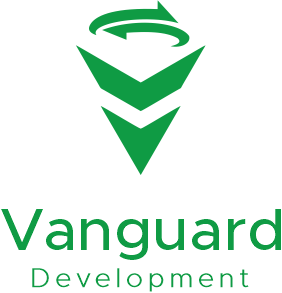Creating Value: How Strategic Financing Decisions Shape Real Estate Development
In the complex world of real estate development, financing decisions do more than simply fund a project—they shape its future success, sustainability, and profitability. From selecting the right financing structure to aligning funding with long-term goals, strategic financial decisions play a pivotal role in the value a project generates. By understanding the influence of financing on every stage of development, from inception to completion, developers can unlock greater potential, mitigate risks, and create lasting value.
This article explores how thoughtful, strategic financing choices can elevate real estate projects, improve returns, and ultimately transform ambitious visions into successful developments.
1. The Foundation of Strategic Financing: Assessing Project Goals and Risks
Every real estate project has unique goals, risk levels, and timelines, making it essential for developers to choose financing that aligns with these attributes.
- Goal-Oriented Financing: Strategic financing begins with clear objectives. Is the project intended to generate steady cash flow, create long-term equity, or be sold upon completion? The answers to these questions will guide financing structures, influencing whether developers opt for traditional loans, joint ventures, or more flexible funding solutions.
- Risk Analysis: Different financing types come with varied risk levels. For example, short-term bridge loans may be high-risk but essential for quickly securing property, while longer-term loans or equity partnerships may offer stability with fewer financial surprises.
Tip: Conduct a thorough risk assessment early on, incorporating potential market changes, regulatory shifts, and project-specific challenges to select financing that offers both flexibility and security.
2. Financing Structures That Shape Project Trajectories
The chosen financing structure impacts nearly every project decision, from construction timelines to leasing terms and investor relations.
- Debt vs. Equity Financing: Traditional debt financing allows developers to retain full project ownership but requires timely repayment. Equity financing, on the other hand, shares ownership and risk with investors, potentially opening doors to additional resources but diluting returns. Many developers leverage a blend of both to balance risk and reward.
- Flexible Financing Options: Innovative financing options, like mezzanine financing or joint ventures, enable developers to structure financing according to unique project needs. Mezzanine financing, for example, can provide additional capital without risking immediate cash flow, while joint ventures can reduce risk by bringing in experienced partners.
Tip: Consider financing structures that support project milestones and allow for scalable adjustments, especially in volatile market conditions where flexibility can be key.
3. Cash Flow Management: Aligning Financing with Project Lifecycles
Effective cash flow management is critical in real estate development, especially for long-term projects that may not generate income until completion. Strategic financing ensures that cash flow remains strong from the outset.
- Matching Funding to Phases: Different financing options are suitable for various project stages. Construction loans provide capital during the building phase, while permanent financing can replace initial loans after completion. This alignment keeps cash flowing smoothly, reducing financial strain during transitions.
- Bridge Loans for Interim Needs: When projects face delays or unexpected costs, bridge loans offer temporary financing to keep things moving. These short-term loans prevent project stalling, though they require careful consideration of timing and interest rates.
Tip: Map out cash flow requirements for each phase and align financing to ensure funds are available when needed, mitigating risks of construction delays or interruptions.
4. Value Creation through Cost Efficiency and Interest Rate Management
The cost of capital—both in terms of interest rates and associated fees—significantly impacts a project’s profitability. Managing these costs strategically can create value, enhance returns, and keep expenses under control.
- Interest Rate Considerations: Developers should weigh the benefits of fixed versus variable interest rates. Fixed rates offer predictability, especially in a volatile economy, while variable rates may provide initial cost savings but carry long-term uncertainty.
- Cost Management Strategies: Securing financing with lower fees or favorable terms can save on costs throughout the project’s lifecycle. Developers may also consider loan refinancing after completion to take advantage of better rates and lower long-term financing expenses.
Tip: Evaluate interest rate trends and consider hedging options like interest rate swaps to manage costs. This proactive approach can protect project margins and support sustained profitability.
5. Strategic Partnerships: Leveraging Relationships to Enhance Value
Strong relationships with lenders and investors are invaluable in real estate development. These partnerships provide both capital and strategic support, particularly in complex or large-scale projects.
- Joint Ventures for Shared Expertise: Strategic partnerships, such as joint ventures, bring more than funding—they offer expertise, additional resources, and potential cost-sharing benefits. Partners may bring market knowledge, operational skills, or connections that enhance project success.
- Banking Relationships: A reliable banking partner offers access to financial products and often more favorable loan terms. Establishing trust with financial institutions can lead to easier refinancing options, potential bridge financing, and expedited loan approvals when opportunities arise.
Tip: Cultivate strong relationships with financial and investment partners, as these relationships can provide support, flexibility, and funding even in challenging market conditions.
6. Long-Term Value Creation and Exit Strategy Planning
Exit strategies, whether refinancing, selling, or leasing, should align with financing choices to maximize returns and minimize risks. Strategic financing decisions influence the profitability and timing of a developer’s exit, making long-term planning essential.
- Aligning Financing with Exit Goals: For developers planning to sell upon completion, financing with prepayment flexibility may be more advantageous. Conversely, long-term holding strategies benefit from stable, low-interest financing to maintain cash flow.
- Maximizing Equity Returns: Equity-sharing arrangements or refinancing strategies can enhance returns by extracting value as the property appreciates. Developers can often leverage this equity for future projects, creating a cycle of growth and reinvestment.
Tip: Build flexibility into exit strategies and align financing terms to enable smooth transitions, allowing developers to maximize profits or reinvest quickly into new ventures.


Leave A Comment